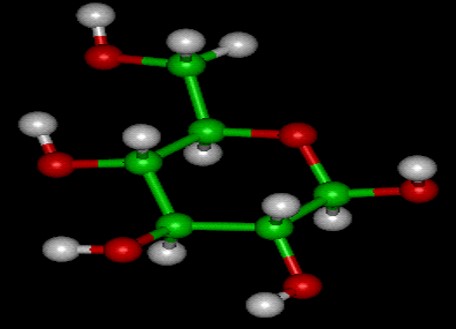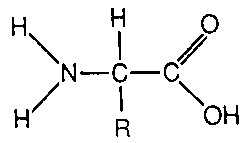AP - Biochemistry And Functional Groups

- 1.
CH3(CH2)16CO2H
- A.
Inorganic.
- B.
Organic; Amino Acid
- C.
Organic; Carbohydrate
- D.
Organic; Lipid
Correct Answer
D. Organic; LipidExplanation
The given chemical formula CH3(CH2)16CO2H represents a long carbon chain with a carboxylic acid group at the end. This structure is characteristic of a fatty acid, which is a type of lipid. Lipids are organic compounds that are insoluble in water and are an important component of cell membranes and energy storage in the body. Therefore, the correct answer is "Organic; Lipid".Rate this question:
-
- 2.
- A.
Inorganic.
- B.
Organic; Amino Acid
- C.
Organic; Carbohydrate
- D.
Organic; Lipid
Correct Answer
C. Organic; Carbohydrate -
- 3.
- A.
Inorganic.
- B.
Organic; Amino Acid
- C.
Organic; Carbohydrate
- D.
Organic; Lipid
Correct Answer
D. Organic; Lipid -
- 4.
- A.
Inorganic.
- B.
Organic; Amino Acid
- C.
Organic; Carbohydrate
- D.
Organic; Lipid
Correct Answer
A. Inorganic. -
- 5.
Green = Carbon; Red = Oxygen; White = Hydrogen
- A.
Inorganic.
- B.
Organic; Amino Acid
- C.
Organic; Carbohydrate
- D.
Organic; Lipid
Correct Answer
C. Organic; CarbohydrateExplanation
The given answer "Organic; Carbohydrate" is correct because carbohydrates are organic compounds that consist of carbon, hydrogen, and oxygen atoms. The information provided in the question states that green represents carbon, red represents oxygen, and white represents hydrogen. Since carbohydrates contain all three of these elements, it can be concluded that carbohydrates are organic compounds.Rate this question:
-
- 6.
Green = Carbon; Red = Oxygen; White = Hydrogen
- A.
Inorganic.
- B.
Organic; Amino Acid
- C.
Organic; Carbohydrate
- D.
Organic; Lipid
Correct Answer
D. Organic; LipidExplanation
The given answer "Organic; Lipid" is correct because lipids are organic compounds that contain carbon, hydrogen, and oxygen. Lipids are a diverse group of molecules that include fats, oils, waxes, and steroids. They are an essential component of cell membranes, provide energy storage, and play a role in hormone production. The color coding of green for carbon, red for oxygen, and white for hydrogen supports the identification of lipids as the correct answer.Rate this question:
-
- 7.
- A.
Inorganic.
- B.
Organic; Amino Acid
- C.
Organic; Carbohydrate
- D.
Organic; Lipid
Correct Answer
B. Organic; Amino Acid -
- 8.
- A.
Amine
- B.
Carboxyl
- C.
Phosphate
- D.
Hydroxyl
Correct Answer
C. Phosphate -
- 9.
- A.
Inorganic.
- B.
Organic; Amino Acid
- C.
Organic; Carbohydrate
- D.
Organic; Lipid
Correct Answer
B. Organic; Amino Acid -
- 10.
NaCl
- A.
Inorganic.
- B.
Organic; Amino Acid
- C.
Organic; Carbohydrate
- D.
Organic; Lipid
Correct Answer
A. Inorganic.Explanation
The correct answer is inorganic because NaCl is the chemical formula for table salt, which is a compound composed of sodium (Na) and chlorine (Cl). Inorganic compounds are those that do not contain carbon and are typically derived from non-living matter. NaCl is a simple inorganic compound that is commonly found in nature and used in various applications, such as seasoning food and preserving food products.Rate this question:
-
Quiz Review Timeline +
Our quizzes are rigorously reviewed, monitored and continuously updated by our expert board to maintain accuracy, relevance, and timeliness.
-
Current Version
-
Mar 21, 2023Quiz Edited by
ProProfs Editorial Team -
Sep 12, 2014Quiz Created by
Justin Lovrien
 Back to top
Back to top



.jpg)

.jpg)

.jpg)

.jpg)
.jpg)